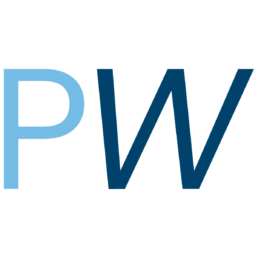HEADACHES
Physios are trained to diagnose, treat, and manage headaches that can arise from a variety of Chemical, Emotional and Physical causes.
If we are to correctly predict patterns of headaches and change its symptoms for the better; a thorough physical assessment is conducted to first of all identify the type of headache and potential triggers. Headaches may originate from neck joints & muscles and can be largely driven by posture and position. It is important to understand the nature of the type of headache a client is experiencing to ensure good outcomes.
DIZZINESS
Dizziness can develop from many different causes, such as from vestibular system disorders, central nervous system origin (central neurological issues or blood flow circulation problems in the brain), as well as cervical spine dysfunction or pathological disorders. Depending on the root cause of your dizziness physiotherapy can readily treat and address them.
A good assessment framework is what we need to rule out what we know as ‘red flags’ which are severe pathologies and diseases warranting further investigation. If the dizziness is determined to come from peripheral vestibular system disorders like BPPV (benign paroxysmal positional vertigo); we will give you treatments and exercises to deal with the symptoms.
METHODS
X-Rays & Imaging
Occasionally your therapist may request further scans like an X-Ray or MRI to rule out dangerous pathology or even to help get clarity around the diagnosis. As a clinic we aim to help clients understand the reason/ root cause of their headaches and dizziness and as such may take the time to use medical images as a client empowerment/ educative tool.
TREATMENT
A physio can treat headaches with a variety of hands-on techniques to improve your symptoms. Some of these are done via;
Muscle Release: We may identify that some tight/ overused muscles may be contributing to your headache. Muscles that are overused and tight are often found with poor mobility, strength, and blood flow. Aiming to use muscle release techniques to get more mobility will help improve the muscle length and symptoms thereby reducing the headache.
Joint Mobilization: We may encounter that some neck vertebrae (neck joints) may be restricted/ stiff after prolonged periods of overuse. The increased restriction and tension from this can cause stiff segments to refer pain into the front of the head as a tension type headache. In this case we may introduce some joint mobilization techniques to reduce the tension found in these segments.
Postural Correction: The 21st century lifestyle would mean that many of us are predisposed to poor postures at work, home and during leisure activities. The act of prolonged sitting in a slumped position at a desk could put some neck muscles in positions of discomfort and overuse. Many individuals who suffer from headaches are often unaware of how their adopted day to day posture may be contributing to headaches. A physiotherapist will look at areas of compensation and imbalance and introduce corrective measures to ensure that headaches are controlled & prevented.
Exercises: Physios are known for the handing out of exercises after treating a client. The reasons we introduce exercises is really to accelerate client recovery. To adequately change and ensure good treatment outcomes clients are encouraged to take control of their life outcomes by reinforcing good postural habits and healthy muscle use via corrective exercises. May we emphasize that these exercises be approached with precision and patience as we seek to correct any movement dysfunction or compensation that frequently develop in clients presenting with chronic headaches.
Dry Needling & Acupuncture: In some phases of headache care, acupuncture and dry needling may be the single most effective intervention a physiotherapist can introduce to a client. The aim of acupuncture and dry needling centres around the focus of reducing pain and discomfort that may be cause by a build-up of Myofascial Trigger points in muscles. They can be effective in managing pain referral and pain gate control (how our body copes and regulates pain)
Nutritional Route: For those who agree that we are what we eat, assessing nutrition may be a good way of identifying and managing headaches. The approach here is to take a tailored client-centered approach in providing basic nutritional guidance to clients that may be requiring the right advice. Combining this approach with the right lifestyle modifications can greatly improve client outcomes. We may take the approach of seeking advice from a nutritionist or dietitian to assist clients and compliment physiotherapy interventions.
The Team Approach: Occasionally we may need to co-manage headaches with other healthcare professionals. We may be seeking the aid of Occupational Therapists, Psychologists or even your general practitioner to help co-manage complex cases that stem from multiple root causes.
OTHER TECHNIQUES
Each of these segments may warrant a separate article to explain the evidence as well as physical & emotional nuances behind some of these approaches. At Perth Wellness, your physiotherapist may utilize these as part of your care plan.
Postural Restoration (PRI)
Dynamic Neuromuscular Stabilization (DNS)
Craniosacral Therapy
Thoracic Ring Approach
Graston Techniques
Related Posts
How to Treat a Bad Ankle Sprain?
13 December 2016
Everyone has experienced an ankle sprain at some point in their lives, it may have been a mild one which resolves in a few minutes, or it could be a severe one that last for weeks to months on end. If you have sprained your ankle as a once of incident, and the pain and symptoms were "mild" there is…
0 Comments5 Minutes
Social-Isolation May Be Important Now, But Don’t Isolate Yourself From Health
28 March 2020
Although there is currently no vaccine to boost your immune system and prevent COVID-19, you can try to keep your immune system — and your body — healthy to give it the best chance of fighting an infection. To be clear, anything that makes your heart healthy, your lungs healthy, and kidneys…
0 Comments3 Minutes


